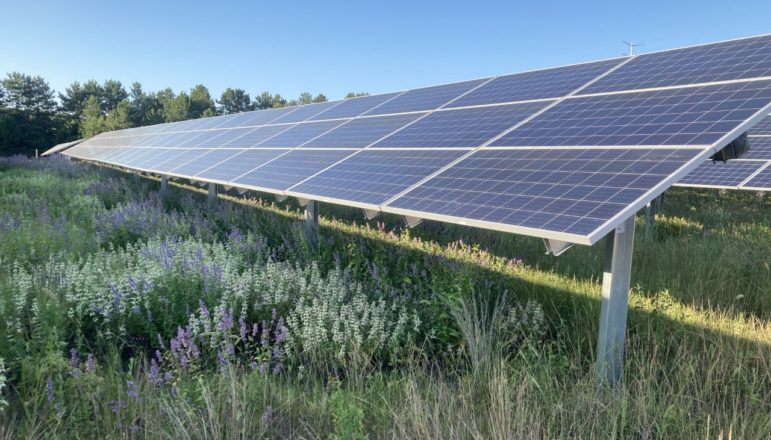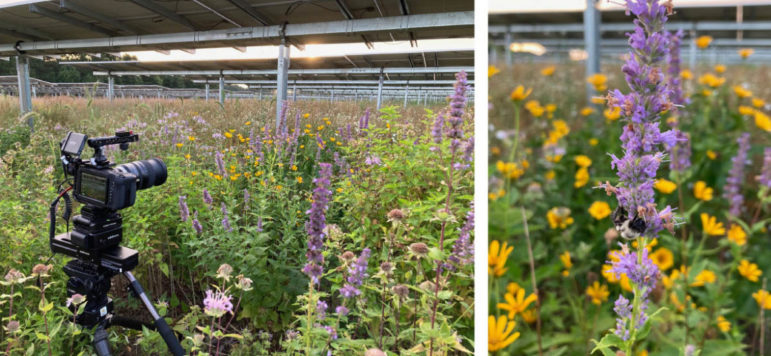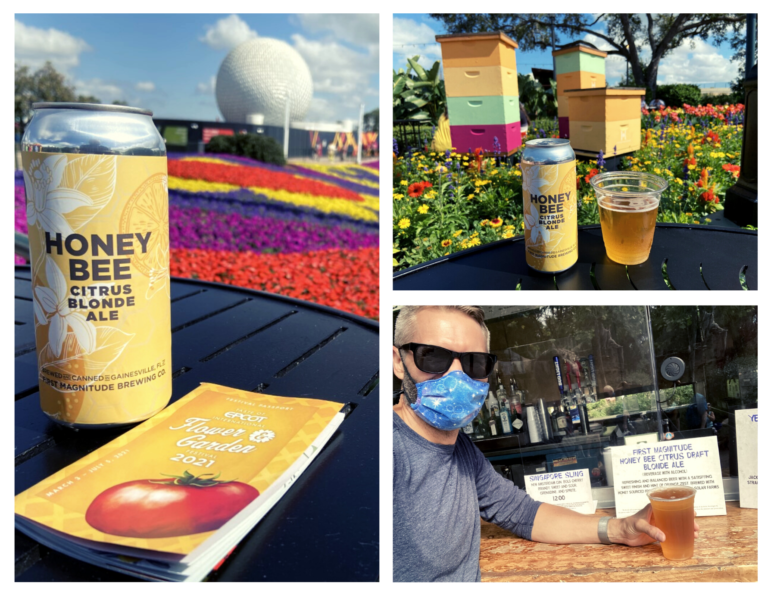
Owner: Enel Green Power
Vegetation: Minnesota Native Landscapes
Location: Minnesota (16 sites)
Size: 100 MWac (907 acres, scorecard)
Power Purchaser: Xcel Energy
Enel Green Power’s Aurora Solar project is one of the state’s first large-scale solar developments, having beat out gas on price when the project was approved in 2014. Completed in 2017, the project consists of 16 pollinator-friendly sites spread across central and southern Minnesota. The locations utilize a variety of stewardship practices, including flowering ground cover for bees and birds, low-growing grass meadows, sheep grazing, and adjacent honey bee hives.
“We’re in an exciting phase as the development of clean energy facilities becomes even more sustainable through dual-use solar practices—the utilization of land for both agricultural benefits and solar power. Through integrating many practices such as establishing large-scale habitats for pollinator insect species to boost crop yields and hosting sheep grazing to reduce maintenance costs and increase solar competitiveness, both local ecosystems and farmers alike can realize value,” says Marcus Krembs, Head of Sustainability for Enel.
In 2015, the Minnesota Public Utilities Commission voted 3-0 to approve a permit for the Aurora project, but it rejected three of the sites that were originally proposed (in Pipestone, Wyoming, and Zumbrota) because of local land-use objections. Ultimately, a number of farmers praised Enel for listening to their environmental concerns and working with them on solutions.
“I felt like we were heard, and they worked with us. And that made us happy,” said Dan Shields, an organic farmer who requested that dark sky compliant lights be installed along the entrance road to the solar installation neighboring his property. Enel not only found a way to honor the request, but also swapped out the lights at its other Aurora sites as well.

Each section of the 907-acre Aurora solar plant has its own landscape conditions and ecological goals in terms of regenerative land management. Aurora Solar is the nation’s first large-scale solar project designed and built to meet Minnesota’s flexible and science-based ground cover standards. To prevent “greenwashing” projects with exaggerated claims, Minnesota legislators unanimously adopted the nation’s first ground cover standards for large-scale solar energy systems in 2016.
A survey and assessment of Aurora completed in 2020 re-affirmed the state’s recognition of the Aurora Solar project as providing beneficial habitat and meaningful ecosystem services—see the detailed scorecards for Aurora Solar. To maintain certification and recognition by the state, an ecologist or land manager completes a Habitat Friendly Assessment form for Established Plantings once every three years.
After an initial pilot, mob grazing with sheep controls vegetation on more than half of the Aurora project’s acres, managed by Minnesota Native Landscapes (MNL). Not only do sheep enhance vegetative growth by aerating the soil and stomping seeds into the ground, but grazing is safer than using mechanical lawn mowers, which can kick up rocks and damage solar equipment.

“We found that it’s far cheaper than bringing in mowers and weed whipping under the panels. The sheep do so much more than a mower ever could,” says MNL Ecologist Jake Janski. “After seeing it in action, all the companies we work with now prefer grazing.”
To prevent overgrowth, the pollinator-friendly groundcover requires an annual mob graze over a two-week period or a single mowing each year. Grazing has been phased in across half of the Aurora sites, and MNL is currently working with the National Renewable Energy Laboratory (NREL) on a cost comparison study. Depending on the installation, MNL says both grazing and mowing options become cheaper as the size of the solar farm increases.

As for vegetation prices, MNL says a turf grass fescue mix can cost anywhere from $500 or more per acre, while a native pollinator mix that includes four species in each bloom time can start at $500 to $550 per acre. The upfront costs are similar, but long-term management and maintenance expenses are typically higher for turf grass.
Enel has also invited beekeeping cooperatives, such as Bare Honey, to install hives just outside the fence line of its solar farms. This supports bee populations and can promote crop productivity when bees pollinate plants on adjacent farms. Bare Honey harvests and sells the solar-grown honey to fine dining restaurants, distilleries, and breweries. Florida-based First Magnitude Brewing used honey harvested from Aurora Solar to create “Honey Bee Citrus Blonde Ale,” a special creation being served during Walt Disney World’s International Flower and Garden Festival.
Marcus Krembs, Head of Sustainability for Enel, says these kinds of partnerships are “win-win opportunities for both landowners and solar operators to create long-term environmental and economic benefits for their land and the surrounding community.”
**This case study was written for The Center for Pollinators in Energy, a national clearinghouse and catalyzer of pollinator-friendly solar information, standards, best practices, and state-based initiatives. The Center for Pollinators in Energy is a program of Fresh Energy, a clean energy nonprofit in Minnesota working to shape and drive bold policy solutions to achieve equitable carbon-natural economies.**

